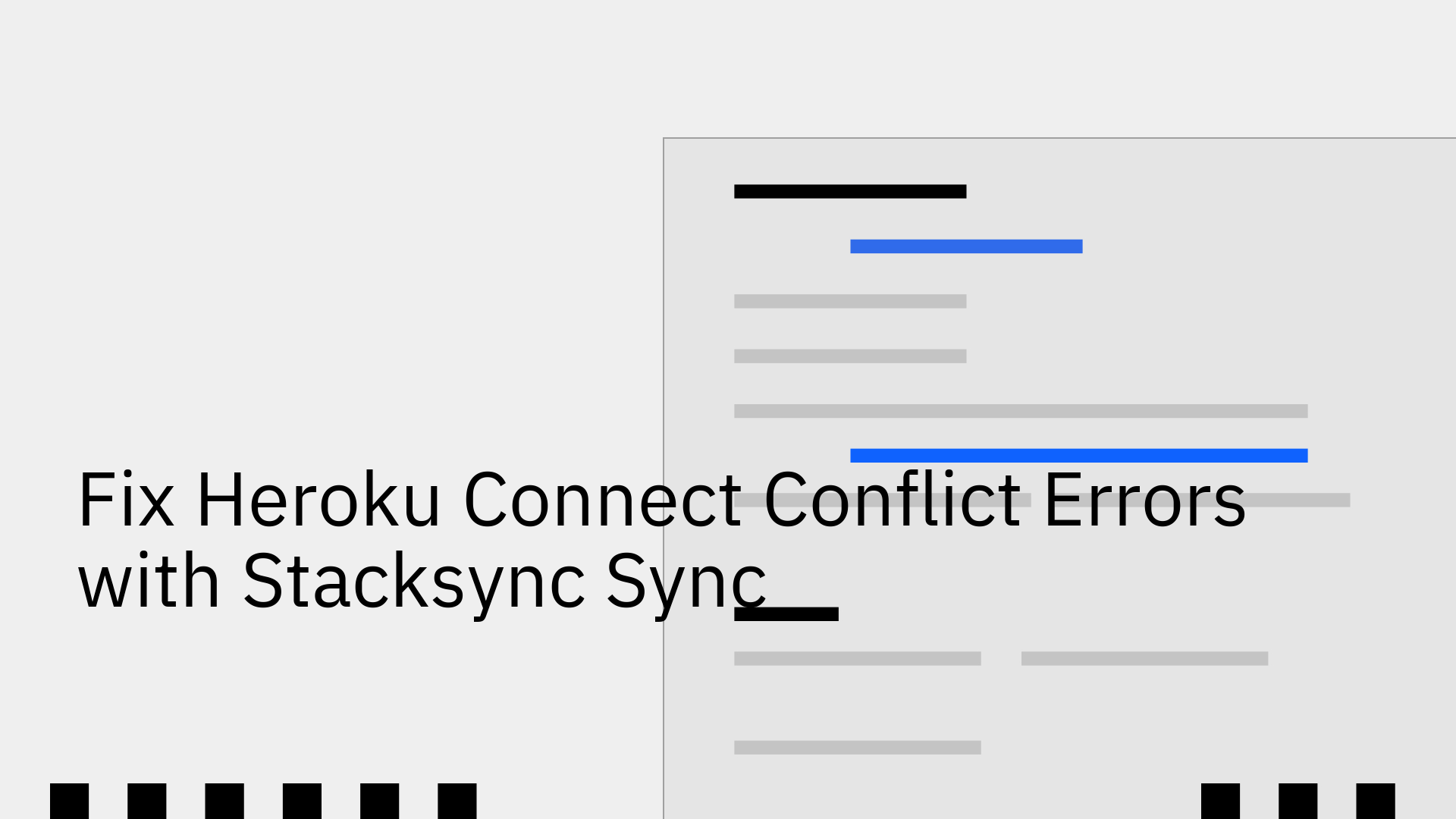
Heroku Connect is a widely used tool for syncing data between Salesforce and Heroku Postgres databases. It helps teams build applications using familiar Postgres tools while keeping data aligned with their central CRM. However, many users eventually run into a persistent and frustrating problem: Heroku Connect conflict errors. These errors aren't just minor glitches; they can corrupt data, halt critical business processes, and force developers to spend hours on manual fixes.
These conflicts are often a symptom of Heroku Connect's underlying architecture. This article will explain why these errors happen and introduce Stacksync as a modern, purpose-built solution that eliminates sync conflicts by design, ensuring your data remains consistent and reliable.
In simple terms, a Heroku Connect conflict error happens when the same piece of data (a record) is changed in both Salesforce and your Heroku Postgres database around the same time. Because Heroku Connect doesn't sync instantly, it can find two different versions of the record and not know which one is correct. This forces the system to stop and report an error, pausing the sync for that record [1].
For businesses, the consequences are significant:
Understanding the root cause of these conflicts reveals the limitations of a polling-based sync architecture.
Heroku Connect operates on a polling mechanism, meaning it checks for changes periodically. By default, this happens every 10 minutes. This delay creates a "latency window" where a user can update a contact in Salesforce while an application simultaneously updates the same contact in the Postgres database. When Heroku Connect eventually runs its next sync, it discovers two conflicting updates and flags an error. While you can shorten the polling interval, this doesn't eliminate the fundamental risk and can increase API usage costs. This polling method is a primary differentiator when you examine Heroku Connect vs Stacksync and their approaches to data synchronization.
Running large data migrations, batch jobs, or making many rapid updates to the same records is another common trigger for conflicts. Heroku Connect may struggle to process a high volume of changes in the correct sequence, especially when interacting with Salesforce's own batch processing limits. This can lead to a "Maximum number of duplicate updates in one batch" error, where the system is overwhelmed by too many updates to a single record within a short period [2]. The sync process is then slowed down or halted, requiring manual intervention.
Your Salesforce instance is likely configured with its own automation, such as Triggers, Process Builders, or Flows. These can interfere with Heroku Connect's sync process. For example, when Heroku Connect writes a change to Salesforce, it might trigger a Salesforce Flow that immediately tries to update the same record again. This can create a loop or cause an unhandled exception, resulting in a Flow error that blocks the sync [3]. The problem isn't just with Heroku Connect, but with the fragile interaction between its polling cycle and Salesforce's event-driven automation.
If you're tired of battling these issues, it's time to replace Heroku Connect with a modern alternative built for real-time, two-way synchronization. Stacksync was designed from the ground up to handle complex data environments without the conflicts that plague older tools.
Unlike Heroku Connect's polling model, Stacksync uses an event-driven architecture. This means changes are detected and synced in milliseconds, not minutes. As soon as a record is updated in either Salesforce or your database, Stacksync processes the change instantly. This approach effectively eliminates the "latency window," making it virtually impossible for simultaneous update conflicts to occur because there's no delay between changes.
In the rare event that two changes happen at the exact same microsecond, Stacksync has a clear and automatic way to handle it. By default, it uses a "last write wins" model to ensure there is always a single source of truth, preventing the sync from pausing. Furthermore, Stacksync's Issue Management Dashboard provides clear, human-readable error messages and allows for one-click retry or revert actions. This saves countless hours of debugging that would otherwise be spent deciphering Heroku Connect logs.
Stacksync is built to handle millions of records without breaking a sweat. Our "Smart API Rate Limits" feature automatically adjusts data flow to respect Salesforce and other system API limits, preventing sync failures due to high traffic. This is crucial for businesses with large data volumes or mission-critical apps that can't afford downtime. For teams looking for a reliable and scalable solution, Stacksync is the best Heroku Connect alternative.
Heroku Connect conflict errors are a direct result of its dated, polling-based architecture. They are not just a temporary nuisance but a fundamental limitation that creates ongoing data integrity risks and consumes valuable engineering time.
Stacksync solves this problem at its core with a real-time, event-driven sync engine, sophisticated error handling, and effortless scalability. Stop spending your time fixing broken syncs and adopt a platform built for reliable, real-time data integration.
Ready to see the difference? Book a demo or start your 14-day free trial today and experience flawless data sync.